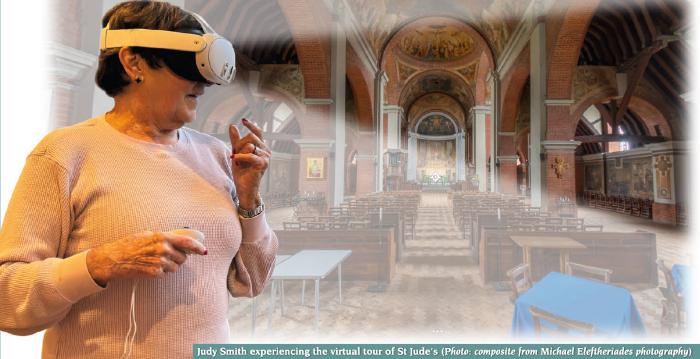Located in Central Square, St Jude's Church was consecrated in 1911 and the spire dedicated in 1913, it has been a key part of the Suburb's history and heritage from it's earliest days.
It was designed by one of the nation's leading architects Sir Edwin Lutyens, and stands as one of the more distinguishable churches around. It was recently described by Simon Jenkins as Lutyens’s ‘architectural masterpiece'.
Building began in 1909, and was completed in 1935. Externally it is 200 feet long and the spire rises 178 feet, nodding to the church spire of St. Mary’s, Harrow-on-the-Hill. Inside, the church is 122 feet from the west door to the chancel steps, and 40 feet to the highest part of the roof.
The ceiling is barrel-vaulted and domed. There are three vaults between the west end and the crossing; a saucer dome over the crossing; one further vault over the crossing and a saucer dome over the sanctuary. To the left of the chancel is the Lady Chapel, the oldest part, which was opened for worship in 1910. In the
sanctuary is a wooden statue of Our Lady, a reproduction of the early 16C Mourning Virgin or "Nuremberg Madonna" which would originally have been part of a crucifixion scene.
St John's Chapel, to the right of the sanctuary, was a gift of the Harmsworth family in 1923.
The memorial window to Robert Lovel St.John is by Robert Anning Bell, one of the most distinguished artists of his day. The green and white marble altar is by Lutyens and in the central panel is a picture by Maurice Greiffenhagen (a friend and colleague of Anning Bell at the Glasgow School of Art) of St John holding a chalice from which is emerging a serpent.
The extremely fine Father Willis organ came from the now-demolished St Jude's Church in Whitechapel where Canon Samuel Barnett, husband of Henrietta Barnett, the founder of Hampstead Garden Suburb, was vicar. It stood for ten years at the west end and was moved, after restoration, to its present position in the chancel of St Jude's in 1934.
.
On the north side of the west door is a memorial to the horses killed in the First World War. Made in 1970 by Rosemary Proctor (died 1995), it replaces the original bronze model of a horse by Lutyens' father, and its replacement, which were stolen. Other important memorials are nearby, and in the lunette above St George's altar, a painting by Starmer represents the last few moments in the life of Michael Rennie, the Vicar's son, who died of exhaustion after rescuing several evacuee children after their ship, the City of Benares, had been torpedoed on its way to Canada in 1940.
 View a Virtual Reality Tour of St. Jude's Church
View a Virtual Reality Tour of St. Jude's Church
This Virtual Reality tour of St. Jude's church can be viewed on desktop and mobile devices, in 3D using Google Cardboard or similar devices, and on a Virtual Reality Headset for a truly immersive experience.